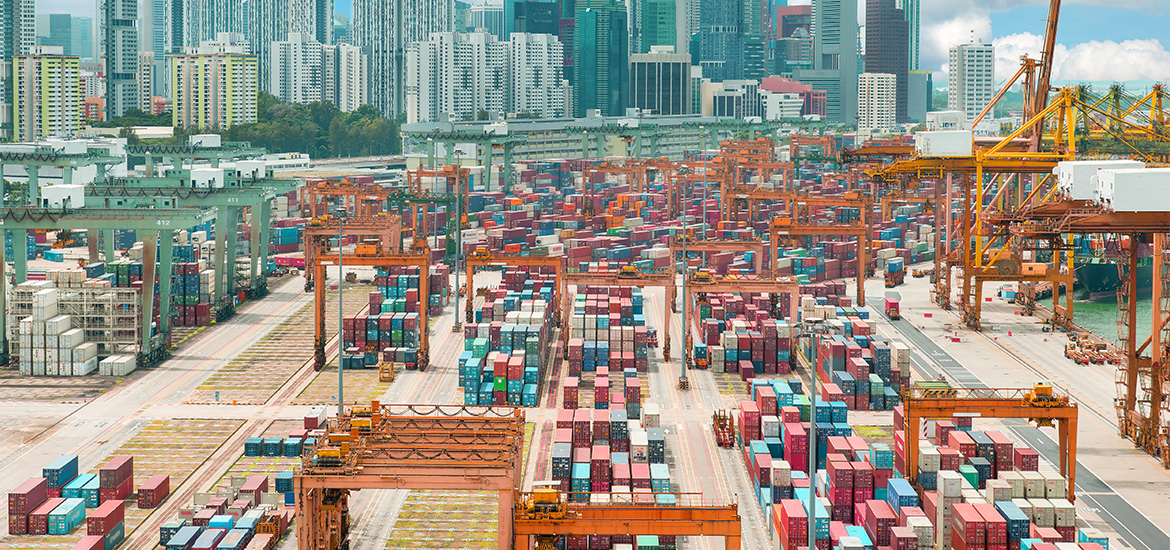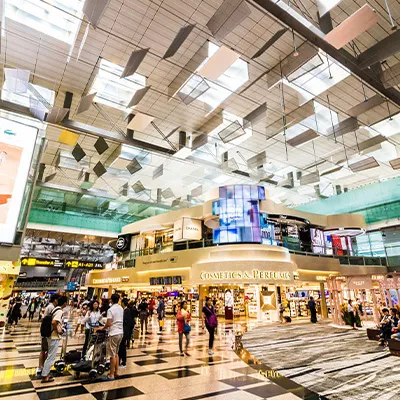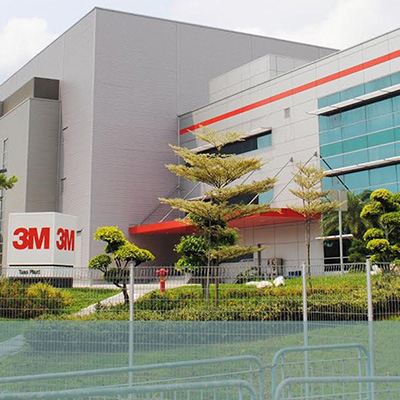But what else has been crucial to the city-state’s success?
World-Class Infrastructure
Home to the world’s busiest transshipment seaport and one of Asia’s largest cargo airports, Changi Airport, Singapore’s infrastructure and connectivity have been critical enablers in global trade — even more so in this pandemic when freight capacity is scarce.
There are plans to double the annual cargo handling capacity at Changi Airport from 3 million to 5.4 million tons. It houses the 26-hectare Airport Logistics Park of Singapore, the country’s first logistics park with Free Trade Zone status when it opened in 2003.
Beyond being recognized for its first-rate infrastructure and connectivity, it is also known for its capabilities in handling time-sensitive cargo and cold-chain perishables.
In line with this, Singapore’s reputation as a cold-chain logistics expert paves the way for its ambitions to become a hub for vaccine transport.
Located at the crossroads of major shipping routes, Singapore’s seaport will also continue to facilitate trade connectivity by sea. The upcoming Tuas mega port will further enhance Singapore’s capability to serve as a transshipment hub for the world’s trade flows, shared Ong.
State-Of-The-Art Technology
Singapore has always leveraged technology to stay ahead of the game as a country with no natural resources.
For instance, the Tuas mega port — slated to be fully operational by 2040 — will be able to process 65 million TEUs as the world’s largest fully automated terminal.
The smart port will harness advanced technologies such as Artificial Intelligence and the Internet of Things (IoT) to deliver green and sustainable solutions. These include driverless automated guided vehicles, smart sensors to detect shipping anomalies such as piracy, and data analytics to predict traffic congestion spots.
Earlier this year, the government also announced a S$15 billion (€9.35 billion) framework to attract tech-driven investments into the marine freight business. These include funding for start-ups in areas like environmental sustainability, data processing and cybersecurity.
The use of technology drills down to even small details that can make a big difference. Last year, DHL Express Singapore launched its WhatsApp Digital Assistant to address customers’ international shipping queries instantly, allowing them to receive curated shipping information and track their shipments on the go.
Several other digital transformation projects were also implemented before the pandemic hit. “We introduced Robotic Process Automation (RPA) to deliver better customer service by reducing waiting times. Our customers can also arrange contactless deliveries at their convenience via our On-Demand Delivery platform that is accessible anytime, anywhere,” explained Ong.
A Champion Of Global Trade
Having a strong network of Free Trade Agreements (FTAs) has also boosted Singapore’s draw for some of the world’s leading companies and start-ups hoping to base their operations in the region.
Singapore has Asia’s most extensive network of Free Trade Areas, covering 60 percent of the world’s gross domestic product. The country’s 13 bilateral and 11 regional FTAs include some of the largest combined trade agreements — as part of the Association of Southeast Asian Nations (ASEAN) — in the ASEAN-China, ASEAN-India, and ASEAN-Hong Kong trade blocs.









